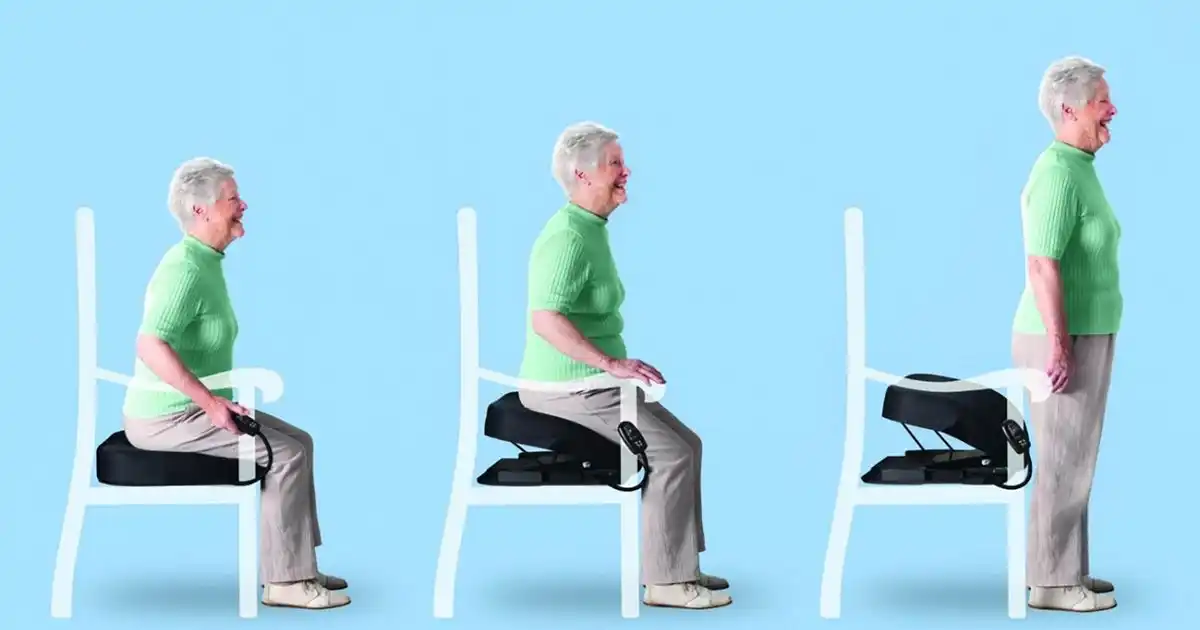As the elderly population continues to grow, ensuring their safety and comfort during transportation becomes a top priority. One innovative solution that addresses this concern is seated lifts. By understanding the importance of understanding seated lifts and how they cater to the specific needs of elderly individuals during transportation, we can ensure their well-being.
Seated lifts are devices designed to assist the elderly with getting in and out of vehicles. They come in various types, each with their own functionalities. These lifts provide a comprehensive solution to improve safety and accessibility for the elderly.
One of the key benefits of seated lifts is their ability to reduce the risk of falls and injuries. With the assistance of these lifts, elderly individuals can safely and securely transfer from their wheelchair or mobility aid to the vehicle seat. This eliminates the need for manual lifting, which can be physically demanding and potentially dangerous.
Furthermore, seated lifts enhance accessibility by providing a smooth and controlled transfer process. They are specifically designed to fit different vehicle models, ensuring a seamless integration into the transportation system. This promotes inclusivity and allows elderly individuals to travel comfortably and independently.
Seated lifts also contribute to the overall well-being of the elderly by promoting independence. With the help of these devices, they can maintain their mobility and participate in various activities outside their homes. This not only improves their quality of life but also reduces social isolation.
In conclusion, seated lifts play a vital role in ensuring the safety and well-being of the elderly during transportation. By reducing the risk of falls and injuries, enhancing accessibility, and promoting independence, these devices provide a comprehensive solution to address the specific needs of elderly individuals. As the elderly population continues to grow, the importance of seated lifts cannot be overstated.
Key Takeaways
- Seated lifts for elderly transportation provide a secure and controlled transfer process, reducing the risk of falls and injuries during transfers.
- These lifts enhance accessibility and inclusivity in the transportation system, allowing for comfortable and independent travel for elderly individuals.
- Seated lifts offer safety features, such as motorized lift mechanisms, secure seating, seat belts, and sensors, ensuring safe and convenient transportation.
- The use of seated lifts promotes independence, autonomy, and dignity for the elderly, while also addressing the mobility challenges they may face.
The Importance of Seated Lifts for Elderly Transportation
The Importance of Seated Lifts for Elderly Transportation cannot be overstated, as they provide a crucial solution for ensuring the safety and convenience of elderly individuals during travel. As people age, mobility becomes more challenging, and getting in and out of vehicles can pose significant difficulties. Seated lifts address this issue by offering a secure and efficient way to transfer elderly individuals into and out of vehicles.
One of the key benefits of seated lifts is the enhanced safety they provide. Elderly individuals may have limited strength and stability, making it risky for them to manually maneuver themselves in and out of vehicles. Seated lifts eliminate the need for physical exertion, reducing the chance of accidents or injuries during transportation. Additionally, these lifts are designed with safety features such as secure harnesses and non-slip surfaces, further ensuring the well-being of elderly passengers.
Furthermore, seated lifts offer convenience and ease of use for both the elderly individuals and their caregivers. With the push of a button, the lift smoothly transfers the passenger from a seated position to the desired location, eliminating the need for strenuous lifting or awkward transfers. This not only saves time and effort but also promotes a sense of independence and dignity for the elderly.
Understanding the Functionality of Seated Lifts
To fully grasp the benefits and capabilities of seated lifts, it is essential to understand their functionality and how they operate. Seated lifts are designed to assist the elderly and individuals with mobility issues in safely transitioning from a seated position to standing or vice versa. Here are four key aspects of their functionality:
- Lift Mechanism: Seated lifts are equipped with a motorized lift mechanism that gently raises or lowers the individual. This mechanism is controlled by the user or a caregiver through user-friendly buttons or switches.
- Secure Seating: Seated lifts feature a secure and comfortable seat that provides stability and support during the lifting process. The seat is designed to prevent slipping or sliding, ensuring the individual’s safety at all times.
- Safety Features: Seated lifts are equipped with various safety features to prevent accidents or injuries. These may include seat belts, armrests, footrests, and safety sensors that detect obstacles and automatically stop the lift’s movement.
- Customization Options: Seated lifts can be customized to meet the specific needs and preferences of the individual. They come in different sizes, weight capacities, and lifting mechanisms to accommodate various body types and mobility levels.
Understanding the functionality of seated lifts is crucial for caregivers and individuals alike. By knowing how these lifts operate, they can be utilized effectively and provide a secure and comfortable transportation solution for the elderly and those with limited mobility.

Advantages of Seated Lifts for Elderly Safety
Understanding the functionality of seated lifts is essential, as it enables us to appreciate the numerous advantages they offer in terms of enhancing elderly safety. Seated lifts are specifically designed to assist individuals with limited mobility in safely transitioning from a seated to a standing position, and vice versa. These lifts provide a secure and stable platform for the elderly to rely on, reducing the risk of falls and injuries.
One of the key advantages of seated lifts is that they promote independence and autonomy for the elderly. By having a reliable mechanism to assist them with standing and sitting, seniors can maintain their dignity and self-confidence. This sense of independence contributes positively to their overall emotional well-being.
Additionally, seated lifts contribute to the physical safety of the elderly by minimizing the strain and effort required to stand up or sit down. These lifts are equipped with ergonomic features, such as comfortable seating and adjustable height settings, ensuring that seniors can transition smoothly and comfortably. This reduces the likelihood of accidents or injuries caused by sudden movements or loss of balance.
Furthermore, seated lifts also address the concerns of caregivers and family members by providing a safe and efficient means of transferring the elderly. Caregivers can confidently assist their loved ones without worrying about their own physical strain or the risk of causing harm to the elderly.
Choosing the Right Seated Lift for Your Needs
Are you unsure about which seated lift is the right choice for your specific needs? Choosing the right seated lift is crucial to ensure the safety and comfort of elderly individuals during transportation. To help you make an informed decision, here are four key factors to consider:
- Weight capacity: Determine the maximum weight the seated lift can safely support. It is essential to choose a lift that can accommodate the weight of the individual using it, plus any additional equipment or accessories.
- Size and dimensions: Consider the dimensions of the seated lift, including its width, length, and height. Ensure that it can fit comfortably in the available space, whether it be a vehicle or a home environment.
- Ease of use: Look for a seated lift that is user-friendly and easy to operate. Features such as intuitive controls, smooth movement, and adjustable settings can greatly enhance the overall experience for both the user and the caregiver.
- Safety features: Prioritize lifts with robust safety features, such as seat belts, non-slip surfaces, and secure locking mechanisms. These features are crucial in preventing accidents and ensuring the individual’s safety during transportation.
Tips for Properly Using Seated Lifts for Elderly Transportation
When using seated lifts for elderly transportation, it is important to follow proper guidelines to ensure the safety and well-being of the individual. Seated lifts are designed to assist in the movement and transfer of elderly individuals from one place to another, such as from a wheelchair to a vehicle or vice versa. To properly use seated lifts, here are some important tips to keep in mind.
Firstly, it is crucial to carefully read and understand the manufacturer’s instructions for the specific type of seated lift being used. Each lift may have its own unique features and operating procedures, so familiarizing yourself with these details is essential.
Secondly, always ensure that the seated lift is in good working condition before use. Regular maintenance and inspections should be conducted to identify any potential issues or malfunctions. This will help prevent accidents or injuries during the transportation process.
Furthermore, it is vital to communicate with the individual being transported throughout the entire process. Explain what will happen, ask for their cooperation, and address any concerns they may have. This will help them feel more comfortable and secure during the transfer.
Additionally, it is crucial to use proper lifting techniques when operating the seated lift. This includes positioning the lift close to the individual, using the appropriate straps or harnesses to secure them, and maintaining good posture while lifting.
Lastly, always be mindful of the individual’s comfort and dignity during the transportation process. Respect their personal space, ensure they are properly dressed for the weather, and provide any necessary support or assistance they may require.
Frequently Asked Questions
Are Seated Lifts Only Used for Elderly Transportation?
Seated lifts are not only used for elderly transportation. They are also utilized in various other scenarios, such as assisting individuals with disabilities or mobility issues. Seated lifts provide safe and convenient transportation for people with limited mobility.
Can Seated Lifts Be Used in Other Types of Vehicles?
Seated lifts can be utilized in various types of vehicles, not just for elderly transportation. They provide a safe and efficient means of transferring individuals with mobility limitations, ensuring their comfort and convenience while traveling.
How Do Seated Lifts Address Elderly Transportation Concerns?
Seated lifts address elderly transportation concerns by providing a safe and convenient way for seniors to access vehicles. These lifts assist with transferring individuals from their wheelchair or mobility device to the seat, ensuring their comfort and reducing the risk of injury.
What Are the Different Types of Seated Lifts Available?
There are various types of seated lifts available to address the transportation concerns of the elderly. These include power lifts, manual lifts, and hydraulic lifts, which provide safe and efficient assistance in transferring individuals from a seated position.
Are There Any Safety Precautions That Need to Be Taken When Using Seated Lifts for Elderly Transportation?
Yes, there are safety precautions that need to be taken when using seated lifts for elderly transportation. These include ensuring proper training for operators, regular maintenance of the lifts, and following manufacturer guidelines for safe operation.
Conclusion
In conclusion, seated lifts play a vital role in addressing elderly transportation concerns by ensuring their safety and comfort. By understanding the different types of seated lifts available and their functionalities, individuals and organizations can make informed decisions to enhance the well-being of the elderly population. These devices not only reduce the risk of falls and injuries but also promote accessibility and independence. By prioritizing the use of seated lifts, we can ensure a safer and more comfortable transportation experience for the elderly.
You may also like to read:
How Chiropractic Care Eases Migraines During Travel




